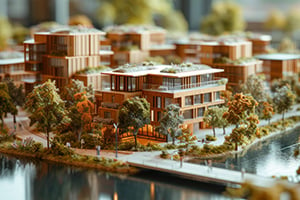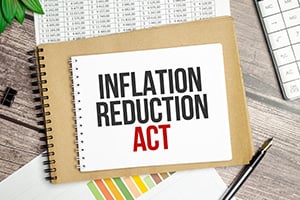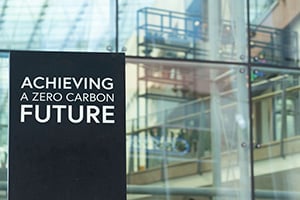Since its inception in 2000, the LEED green building rating system, which is an acronym for Leadership in Energy and Environmental Design, has driven significant reductions in energy, water consumption and automobile emissions. The long-standing mission of the United States Green Building Council (USGBC), LEED’s creator, is to transform the building industry by creating buildings that outperform typical construction and operation methods. To incentivize project teams to address local issues, the LEED rating system has designated energy use, landscape irrigation, and alternative transportation as regional priorities in the Southeast. Regional Priority credits are one of two bonus sections within the rating system that adds extra points to your total for earning a base credit included in the priority list.
For example, new construction projects that locate near rail or bus public transportation infrastructure, or existing buildings that measure at least 25% ridership on public transportation earn a bonus point for addressing this regional priority. The connection of transportation and green buildings is not always obvious. LEED emphasizes this issue because it is not only the building components that impact the environment, but also building occupants in their decision of how to get to the buildings. Through education and awareness, with the help of partner like the Clean Air Campaign, occupants can minimize their environmental footprint by reducing single occupant car trips. As an owner or property manager, this is a low or no cost method to contribute to LEED certification or start promoting harmony within the built environment.
The second regional priority to consider is potable water use. LEED guidelines state that buildings must reduce potable water consumption of indoor fixtures 20 percent more than required by the current plumbing code. Savvy building operators already know that installing aerators on all faucets will reduce your operating expenses and return your investment within the same year. For the rest of us, LEED also mandates additional reductions from toilets and urinals to achieve 20% potable water savings.
Outdoor landscape irrigation is an optional credit in LEED, but it is incentivized as a regional priority. Options to find savings are broader and include variables like plant selection and irrigation type. Most importantly, the question still remains, where does the water come from? The ideal source is rainwater. Considering the typical building uses tens of thousands of water to annually irrigate their vegetation, those cost savings from ‘free water’ also add up to significantly lower operating expenses. Even buildings that are not pursuing LEED can and do benefit from these water saving strategies.
Energy use is the most urgent issue addressed by the LEED rating system, evident by offering the most points for this credit category. The two largest plug loads in a building originate from lighting and computers. Most lighting distributors are well educated in passing on both environmental and profit savings to their customers. This action item involves replacing fluorescent T-12 lamps with higher efficiency and longer lasting T-8 or T-5 lamps. The key to reduce your energy demand and dramatically lower your power bill is achieving a lower number.
How do you deal with those pesky computers that are difficult to track or control? A very basic initial step involves education. Implement a sustainable purchasing plan and educate your staff or tenants. The simplicity of LEED is the synergy between credit requirements and existing standards or environmental ratings, like the EPA’s Energy Star programs. A sustainable purchasing plan should start with a goal to procure only ENERGY STAR rated electronics. Tracking these sustainable purchases is essential to maximize your certification level for initial and re-certification in the Operations and Maintenance rating system.
If the first step is conservation illustrated above, the second step is verification of energy consumption by audits or commissioning. These services can range far and deep in scope and investment. So before you commit, take advantage of the EPA’s ENERGY STAR for Buildings benchmarking tool called Portfolio Manager. Even if you are not sure if LEED is right for your building, any operator or owner will benefit from tracking their utility data in this easy to use online tool. Measuring building performance is the key differentiator between the new construction and existing building rating systems. So start early and report often because you can’t reduce what you don’t measure, and you can’t measure what you don’t meter. Be sure you work with a consultant who is up to date with the current EPA reporting guidelines.
The bottom line is that all buildings can reduce energy, water consumption and automobile emissions even before registering your project with a LEED rating system. Making progress in these areas of regional priority will provide immediate operating savings and make the LEED process quicker and easier. When in doubt, ask yourself, “Does this decision add value to my triple bottom line?” The USGBC defines the triple bottom line as equally beneficial for people, the planet, and your profit.
© 2011 Sustainable Investment Group (SIG). All rights reserved.



